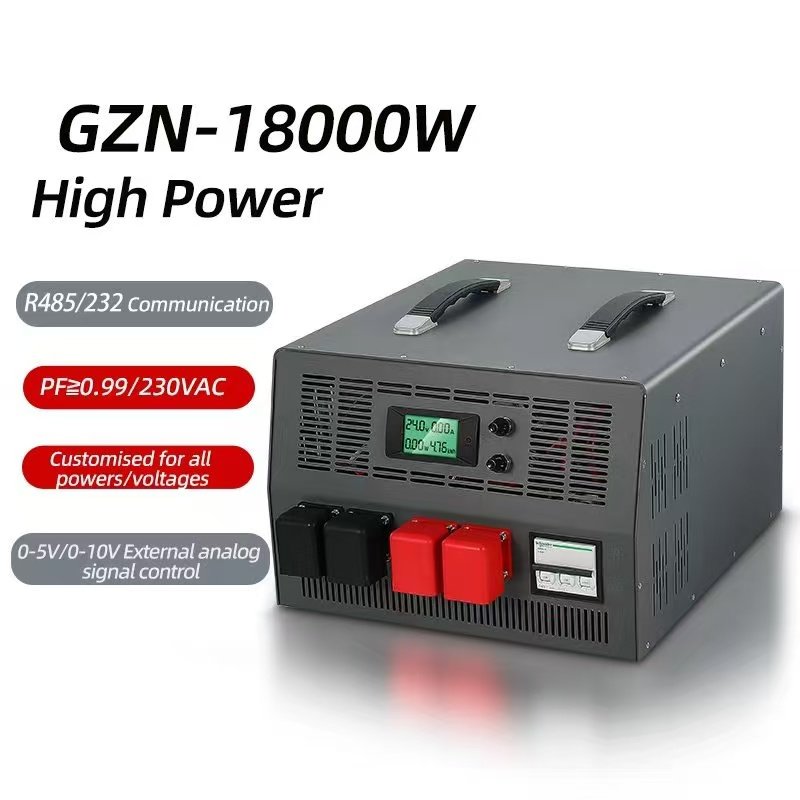DC power supplies are devices that convert AC (alternating current) power or another form of DC power into a regulated DC (direct current) output voltage suitable for powering electronic devices. There are various types of DC power supplies, each designed for specific applications and characterized by their unique features. Below are some common types of DC power supplies described in detail :

- 1. Linear DC Power Supply:
- A linear DC power supply uses a transformer to convert AC to a lower AC voltage, which is then rectified into DC. A linear regulator is employed to maintain a constant output voltage by dissipating excess power in the form of heat.
- Advantages: Simple design, low noise, and low ripple voltage.
- Disadvantages: Low efficiency (due to heat dissipation), larger size, and limited output current capabilities.
- 2. Switch-Mode DC Power Supply (SMPS, or Switching-Mode Power Supply):
- Also known as a switching power supply, it converts AC to DC using a rectifier, but instead of a linear regulator, it employs a switching element (e.g., a transistor) that rapidly switches on and off at a high frequency to control the output voltage.
- Advantages: High efficiency (up to 95%), small size, light weight, and wide range of input voltages.
- Disadvantages: Higher complexity, potential for higher noise and ripple, and need for EMI (electromagnetic interference) filtering.
- 3. Programmable DC Power Supply:
- A programmable DC power supply allows for the adjustment of output voltage and current settings, often through a user interface or remotely via software.
- Features: Adjustable voltage and current limits, programmable ramp rates, and the ability to save and recall settings.
- Applications: Used in test and measurement applications where precise control over power delivery is required.
- 4. Battery-Backed DC Power Supply:
- Incorporates a battery as a backup power source, ensuring continuous power supply in the event of an AC power failure.
- Advantages: Increased reliability and protection against power outages.
- Applications: Critical systems such as data centers, telecommunication networks, and medical equipment.
- 5. Isolated DC Power Supply:
- Provides electrical isolation between the input and output, using a transformer or other isolation methods to prevent ground loops and reduce noise.
- Applications: Where galvanic isolation is required, such as in medical devices, industrial automation, and testing equipment.
- 6. Benchtop DC Power Supply:
- Designed for use on a benchtop or workbench, typically with a larger size and higher output power capabilities compared to portable or rack-mounted units.
- Features: Adjustable output voltage and current, digital displays, and advanced features like overvoltage and overcurrent protection.
- 7. Modular DC Power Supply:
- Consists of interchangeable modules that can be configured to provide different output voltages and currents, offering flexibility and scalability.
- Advantages: Easy maintenance, upgradeability, and space-saving design.
- Applications: Ideal for systems requiring multiple output voltages or for applications where future expansion is anticipated.
- 8. High-Voltage DC Power Supply:
- Designed to provide DC output voltages exceeding typical levels (e.g., above 100V or even up to several kilovolts).
- Applications: Used in research, industrial processes, particle accelerators, and electrostatic discharge testing.
Each type of DC power supply has its unique set of characteristics and is suitable for a particular range of applications. Selecting the right DC power supply depends on factors such as output voltage and current requirements, efficiency, size, weight, and cost.
